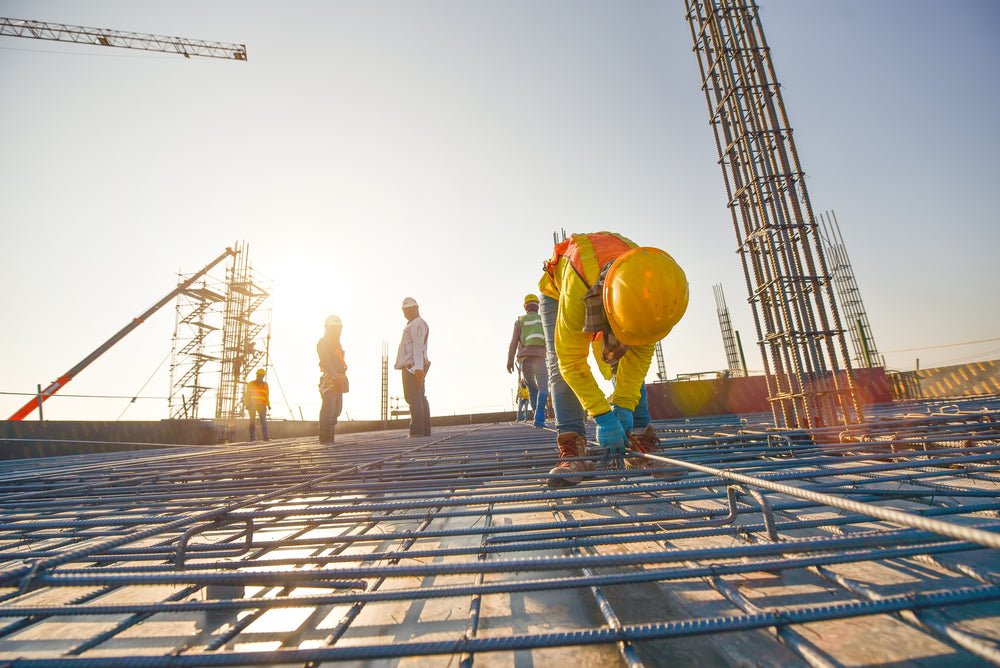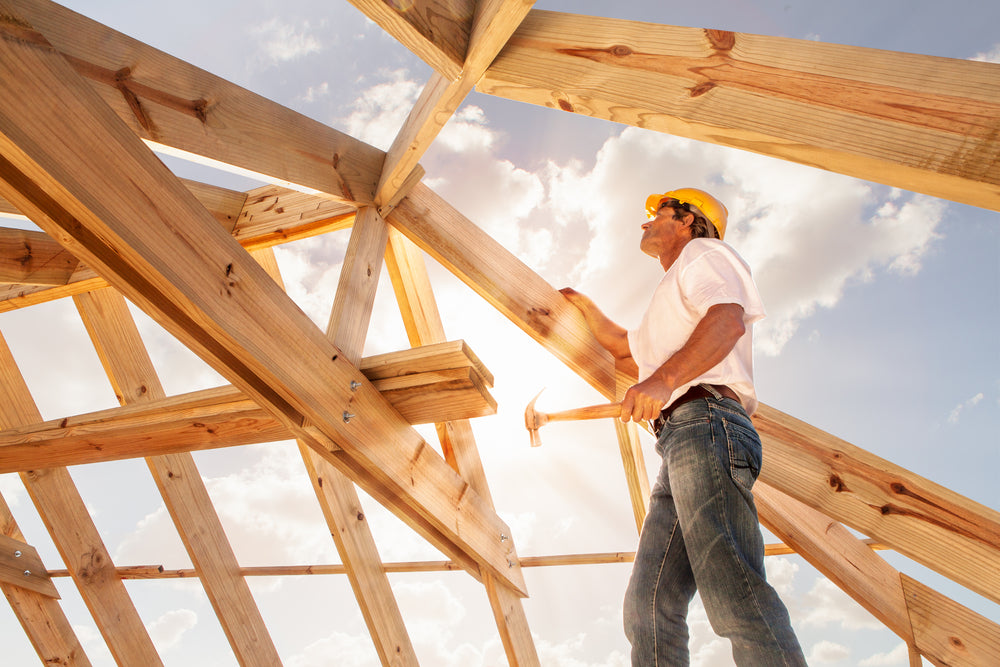Nearly 50 years ago, representatives from multiple governments met in Stockholm to discuss issues affecting the global environment. Many recognize the United Nations Conference on the Human Environment of 1972 as the official launch of the international environmental movement.
As awareness has grown about the effect of any human activity on our amazing ecosystem, there’s been ever-increasing interest in the use of practices that minimize harm done to the environment, as well as lowering the cost and amount of energy use.
“Green” building practices developed out of this worldwide desire to put aside harmful practices and create a sustainable building model. Nearly every country currently recognizes it’s crucial to minimize energy use and eliminate the waste of valuable resources.
In the last two decades, green building has advanced from being a barely recognized movement to prominent status. Mainstream demand for sustainable construction, along with healthier work and living places, springs from two main sources: government agencies and individual clients.
Sustainable development goals adopted by the United Nations in 2016 include various aspects of climate protection, water management, and recycling or repurposing materials, as well as supporting innovations to produce clean energy. The UN’s overarching goal is “to achieve a better and more sustainable future for all.”
When you consider the huge amount of energy (mostly electricity) used for the construction and maintenance of buildings, the volume of water that buildings require, carbon emissions created, and the amount of landfill waste created by demolition of buildings, it’s easy to acknowledge that a shift toward energy-efficient and sustainable building is imperative.
Aside from a lower impact on the environment, green buildings also create healthier, more comfortable indoor environments for the people who use them. Protecting the planet and promoting the physical well-being of the occupants are equally significant.
What exactly is “green building”?

The Environmental Protection Agency describes the green building as
the practice of creating structures and using processes that are environmentally responsible and resource-efficient throughout a building's life-cycle from sitting to design, construction, operation, maintenance, renovation, and deconstruction.
In other words, it’s the whole package - from the first planning stages to construction and throughout the entire lifespan of the building. Reducing the consumption of energy and cutting back on the use of water are two chief resource aims of green building.
Structures that create just as much energy as they use, mainly through solar, wind or geothermal sources, are quickly gaining in popularity. An exciting recent development is buildings that create even more energy than they consume, feeding excess electricity back into the grid. Imagine the possibilities of other eco-friendly solutions that weren’t envisioned a decade or two ago.
But energy-efficiency and fabrication aren’t the only concerns behind green building practices. The human health factor is high on the list of desirable features too. Indoor air quality is significantly better in green buildings, and these buildings play a part in securing better mental and emotional health for occupants.
Unlike their ancestors, human beings in industrialized areas spend most of their time in buildings throughout the day and night. Contaminants from many of the synthetic building products developed in the last century expose us to various types of chemical and biological pollution. Dust, fiberglass, gases, asbestos, and formaldehyde are just a few of the problematic materials that have been used traditionally in constructing homes and other buildings.
Eliminating volatile organic compounds (VOCs) in building materials is the healthiest practice. Off-gassing from carpet, paint, and glue, for instance, can create or add to sensitivities and cause headaches, coughs, asthma, and eye irritation. These fumes have even been connected to serious bouts with fatigue, memory loss or depression.
Construction methods and materials used in green buildings strive to eliminate this harm, along with preventing or minimizing further depletion of the natural resources in our environment. Modern building materials that are considered 'green' now comprise quite a lengthy list.
What are the desirable materials for green building?

No doubt you’ve heard many concerns about the destruction of countless acres of forest land. That’s just one reason that popular materials for sustainable construction include renewable plant materials.
Sourcing lumber only from well-managed and certified forests - that meet third-party sustainability standards - is the preferable green practice. Bamboo continues to grow in popularity because it’s fast-growing, sustainable, and versatile.
Recycled metal, concrete, and stone are common materials for green structures. Paper and cardboard can be fashioned into wood-type products that are very sturdy. Glass can be recycled into the shape of bricks.
Up-to-date methods of fabricating adobe, clay, compressed earth block, rammed earth, or baked earth into building components utilize older forms of architecture in new ways. These materials are safe for humans and cause less depletion of the ecosystem.
Many other non-toxic, reusable, or recyclable products broaden the choices. Even materials like flax, wool, linen, sisal, cork, and coconut have been added to the list of potential building resources. Moving away from synthetics (which are mostly plastics) to the use of natural fibers instead reduces the presence of chemicals in everyday life.
The merits of green building are much broader than the reduction of poor indoor air quality that leads to lung and breathing problems. Aside from the obvious physical need for decreasing pollutants, there’s a growing emphasis on structures adding comfort and beauty. “Going green” doesn’t mean boring, unattractive structures.
The eco-friendly building involves better lighting, especially the introduction or increase of natural light. The addition of greenery and beautiful interior design along with pleasant views for the occupants create a sense of well-being. There are even commercial green buildings that adjust indoor oxygen levels when necessary to keep occupants more alert. Students and office workers in particular benefit from this innovation.
What are the most popular techniques for green home building?

Green building used to be equated with luxury home construction but that’s no longer the case. Builders and investors are now finding that many green products and techniques are competitively priced, and homeowners benefit from lower energy costs throughout the lifetime of their home.
The process springs from good planning and design, well before any materials are chosen. Careful site location and consideration of the sun’s orientation to the structure will cut down on energy and heating needs. Some homes can be partially built into a slope or hillside to provide a buffer and conserve energy.
Heating and cooling are responsible for up to half of a home’s energy use. Using High-R value insulations (that also meet “green” standards) inside the walls and sealing any places prone to drafts prevents air leaks and mean lower operating costs for homeowners. High-efficiency windows block out heat in the summer and prevent warm air from escaping the home in colder temperatures.
Design elements such as placing windows on all sides permit cross-ventilation of the interior. Light tubes and skylights add brightness to darker interior areas so that less artificial light needs to be used. Awnings or overhangs protect the home from the sun when it’s high in the summer sky, but allow natural light and warmth to penetrate in the winter when the sun is lower.
There’s also been a move toward using panels or pre-made trusses. This mode of construction can be more energy efficient than doing all of the building on site. Many of these pre-fab systems require less labor and earn points toward gaining green certification. There’s less waste material left onsite, too.
Well-executed landscaping, such as deciduous trees or vines on the south side of buildings, provide shade for the structure during hot summer days but allow the entrance of natural heat and sunshine during colder winter months.
Using only native plants reduces the need for water or chemical fertilizers. A “green roof” (which is a roof literally covered in sustainable plants) lowers cooling costs, adds oxygen to the atmosphere, and reduces stormwater runoff. Many of these unexpected gardens are being added to urban and suburban areas.
What certifications does a building need to be called a certified green building?

Green building product standards were first seen in the marketplace in the 1980s. Many of these were the result of concerns about toxic materials and their potential impact on either children's health or general indoor air quality. Later the emphasis grew to include concerns about global warming and using fewer resources.
Hundreds of green product certifications are in use around the world. It can be tough to wade through which standards apply to a specific building project. The benefit of meeting certifications is threefold: to have buildings that cost less to operate, that have optimal energy performance, and can be promoted to the public as environmentally friendly. Studies show that occupants typically have high satisfaction rates with these buildings.
One of the best-known green building/rating certifications is called LEED, which stands for Leadership in Energy and Environmental Design. The managing organization for LEED is the U.S. Green Building Council, which ensures independent third-party verification for both new construction and remodeling of existing structures.
LEED certification focuses on finding sustainable sites, ensuring good practices for energy use and a clean atmosphere, water efficiency, materials and resources that are sustainable, and indoor environmental quality.
The number of other green certifications is growing yearly - supportive programs that help to cut down on energy usage and lower costs while providing healthier living spaces to protect the environment. With the advances of the past fifty years as a foundation and all the progress that still lies ahead, green building practices promise to be of great benefit to the billions of people populating our precious planet.


4 comments
neelaadritrueframe
I recently read an article about how green building practices are leading to a more sustainable future. The article highlights the positive impact of sustainable architecture on the environment.
neelaadritrueframe
An insightful read Your article perfectly captures the transformative impact of green building sustainability. It’s inspiring to see how eco-friendly initiatives are changing the world for the better. This is an exciting achievement that highlights the importance of these practices for a more sustainable future.
Henry Killingsworth
It was interesting to me when you talked about how site location is critical when it comes to green buildings. If you are wanting to construct a green building, I would think that it would be a good idea to identify at least three suitable locations. Narrowing down your locations seems like a good way to make sure that you find the best spot for your green building. https://www.controlservices.com/
Stephen Claus
Thanks for this article. This is very useful, future homeowners can get points from here.